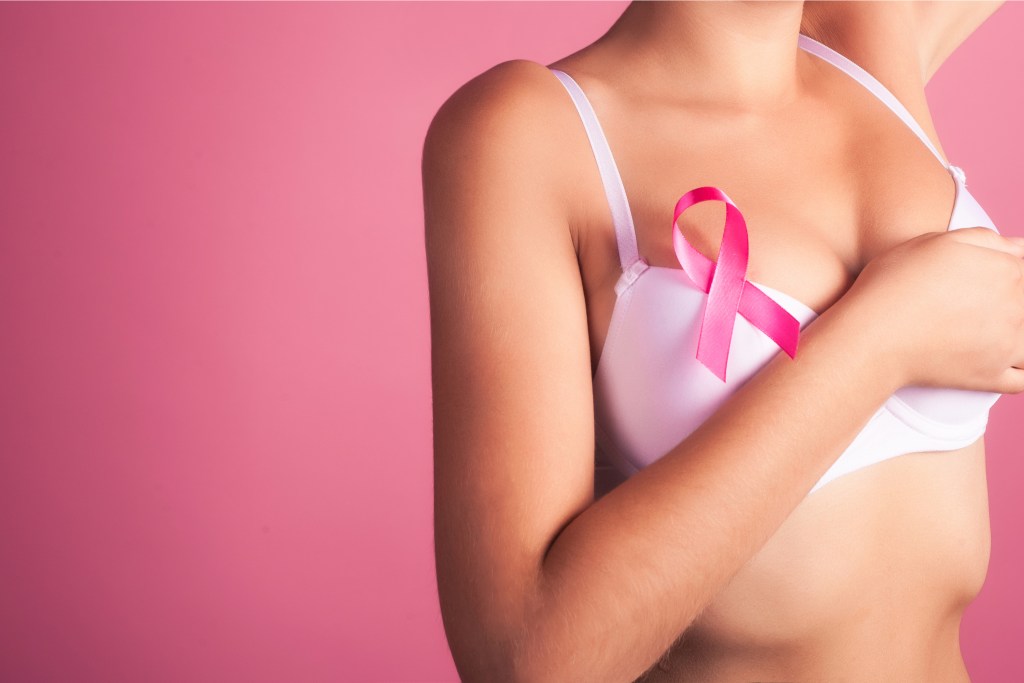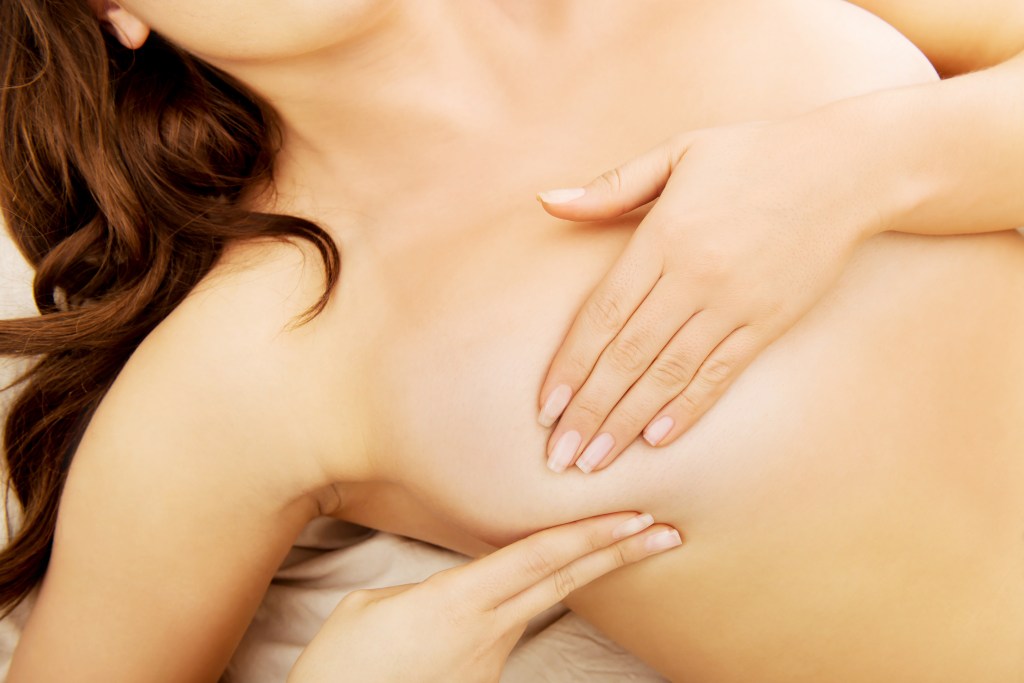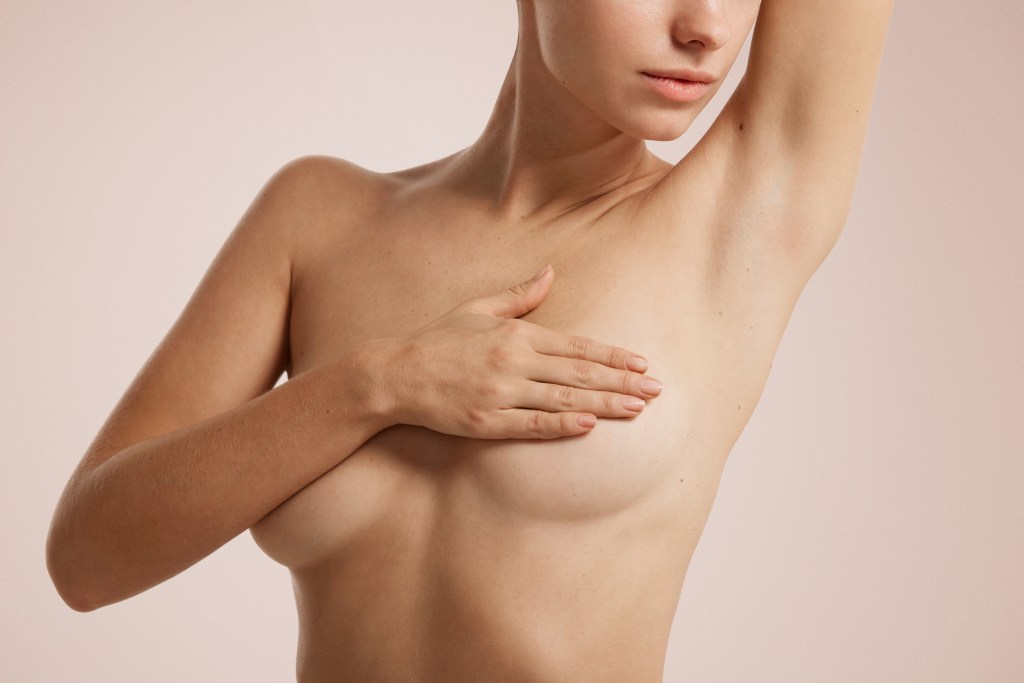Breast cancer is the most common type of cancer among U.S. women, and it’s estimated more than 330,000 American women will be diagnosed with the disease in 2021. The earlier breast cancer is caught, the greater the chances of survival and less intensive treatment for the disease.
While mammograms can find breast cancer in its earliest stages before a lump can typically be felt, breast self-examinations are an important way that women can detect lumps or changes in their breasts on a regular basis. Forty percent of diagnosed breast cancers are detected by women who feel a lump during a self-exam.
Three ways to perform a breast self-exam
Experts recommend adult women do breast self-exams at least once a month. The key to an effective self-exam is knowing how to do one properly. There are three ways breast self-exams should be performed. They are:
- In front of the mirror. Look at your breasts with your arms straight down at your sides. Look for changes in your breasts’ contour, as well as skin changes such as swelling or dimpling. Look at your nipples and note any changes in position or appearance. Now, do the same while putting your hands on your hips and flexing your chest muscles. Finally, raise your arms overhead, and again look for any changes in the breasts and nipples.
- Lying down. When you lie down, breast tissue is spread out in a different way than when you’re standing, so you’ll want to examine your breasts while you’re prone, as well. Start on the right side by putting a pillow under your right shoulder and your right arm behind your head. You’ll want to use your left hand to examine your right breast. Using the pads of your first three fingers while keeping the fingers flat and together, firmly and smoothly use a circular motion about the size of a quarter to examine your entire breast. You can start at the nipple and move outwards, or go up and down in vertical lines – just make sure you cover the entire breast, all the way out to the armpit and up to the collarbone. Use all types of pressure: light, medium, and firm. Remember, you’re feeling for any lump, tenderness, or change from what your breasts usually feel like. Squeeze your nipples to look for discharge. Once you’re done, repeat the process on your left breast, this time using your right hand.
- In the shower. You also want to examine your breasts while standing or sitting in the shower because water makes the skin more conducive to an exam. Use the same steps you did when you were lying down including using the hand opposite from the breast you’re examining. Also, feel for lumps or changes in your armpits or collarbone areas.
Remember, no matter which type of exam you’re doing, you are looking for lumps or changes in breast/nipple size or shape, redness or tenderness, nipple discharge, and dimpling or swelling of the skin. A good rule of thumb is that you’re looking for anything that’s unusual or not the norm for your breasts.
What to do if you find something
First, don’t freak out. Finding something doesn’t mean you have cancer. There are a number of benign conditions that cause changes to the breast. But do call your doctor as soon as possible for a follow-up. Write down what you found and when you found it, and bring that information to your appointment. Remember, even if it is cancer, breast cancer has a 99% five-year survival rate when it’s found at the localized stage, before it’s spread outside of the breast.
How often and when to do a self-exam
You should examine your breasts at least once a month, but you can examine them even more often. The better you know the uniqueness of your own breasts, the better you’ll know if something about them has changed. However, don’t examine your breasts the few days before or during menstruation, when hormonal changes can make the breasts swollen and tender. If you are no longer having periods, pick a day (or two or three) of the month you like, and do your exams then.
Although a mammogram is still the best way to find breast cancer early when it’s most treatable, breast self-examinations are another important tool to help you find any changes in your breasts that warrant a call to your doctor.
BlissMark provides information regarding health, wellness, and beauty. The information within this article is not intended to be medical advice. Before starting any diet or exercise routine, consult your physician. If you don’t have a primary care physician, the United States Health & Human Services department has a free online tool that can help you locate a clinic in your area. We are not medical professionals, have not verified or vetted any programs, and in no way intend our content to be anything more than informative and inspiring.






